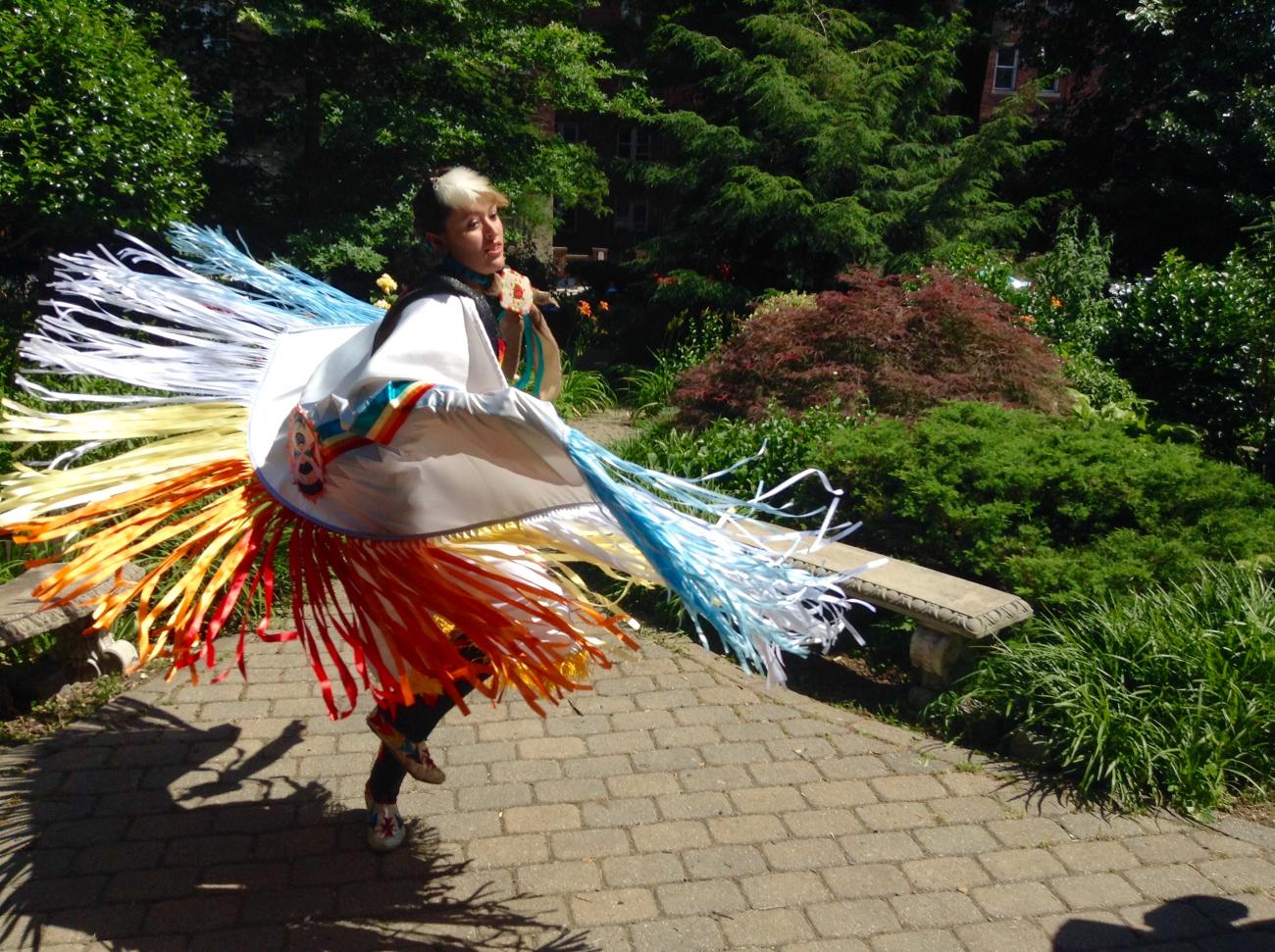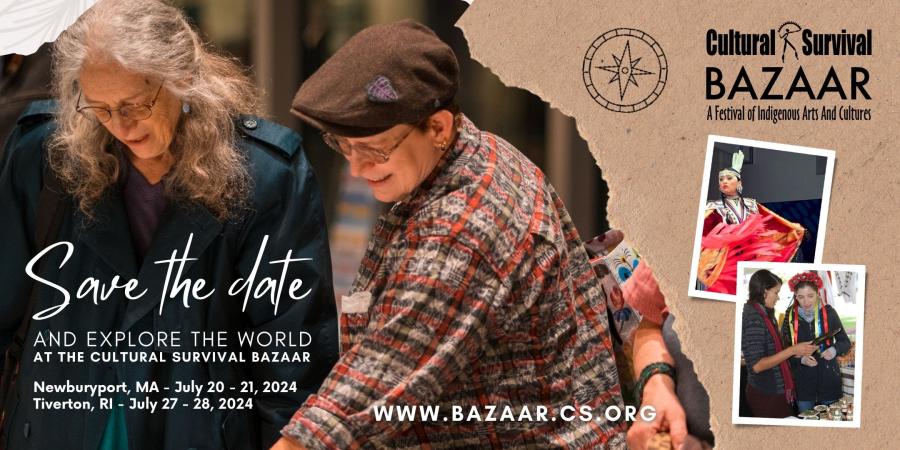
This article is part of the Manhatta Revisited Series
By Phoebe Farris
June 17, 2018
Once again, despite the rainy forecast the weather cleared up and the sounds of drums, songs, jingles, and footsteps could be heard in the Bruce’s Garden section of Isham/Inwood Park. Brian Miles (Mohegan), a Harvard educated Senior Analyst with KENC Management Consultants and a singer with the Mashpee Wampanoag Wakeby Lake Singers and Brandon Marc Tubby (Powhatan), a contemporary/ traditional musician, composer, and singer with the groups Bitter Grace and the Silvercloud Singers of NYC were the leaders in the “Drums, Rattles, Flute, and Song” presentation.
Taylor Smith (Shinnecock), an actress, model, dancer, and jeweler gave a presentation titled, “We Dance As A Prayer” and Tohanash Tarrant( Shinnecock), a beadwork artist, dancer, and traditional Native wear designer gave a presentation about the Woman’s Fancy Shawl titled,”Powwow Dancer.”

Tohanash Tarrant (Shinnecock), Fancy Shawl Dancer
Before the music and dance performances the audience of local community members reflective of the neighborhood’s diversity received some historical background about powwow music, social songs, 49 songs, and round dance music. There was emphasis on the fact that there are many Algonquin Tribes whose members speak similar but still distinct languages, somewhat like Spanish and Italian for example. In terms of a common music in the past and continuing today, people travel and influence each other. Most powwow song “words” are really vocable (sounds) that musicians created to overcome language barriers among the various Algonquin Tribes. Songs change overtime due to travel, historical developments, and the need for all cultures to evolve and not remain stagnant. Social songs which are secular are more receptive transformation whereas ceremonial songs are more likely to stay the same.
Visitors had heard about 49 songs but had questions about their meaning. As explained by Brian Miles and Brandon Tubby, 49 songs are often funny and irreverent and there are conflicting opinions about their origins. Some say they originated during the 1849 Gold Rush. Others claim they date back to war expeditions when men passed through villages singing and urging young warriors to join them on raids. As that lifestyle changed the songs evolved into something else and became social songs and used in round dances.

Brian Miles (Mohegan) and Brandon Marc Tubby (Powhatan)
Miles stated,"We sing for a whole lot of reasons.When we sing it is for a purpose such as someone's passing.There are love songs.There are emotions in our singing. There are veteran songs to honor fallen soldiers and their families. When we sing we have heart.”
Eastern Woodlands dancer Taylor Smith explained the origins of the jingle dress as explained to her the elders. According to many of origin stories a man’s daughter was very sick and unable to walk or to dance in ceremonies. The father decided to design a special dress for his daughter and pray that she would be able to get up and dance again. Each time the father rolled up the empty tin top cans that used to hold tobacco he said a prayer and his daughter got better and better. Eventually the daughter became well enough to stand up and walk again. The tobacco tin tops were added to the new dress and made a jingle sound when his daughter moved. Smith said, "the jingle dress/sound/dance became a prayer for the people.”

Taylor Smith(Shinnecock), Traditional Jingle Dancer
As Tohanash Tarrant explained it, the woman’s fancy shawl dance and men’s fancy dances seen at powwows is a more recent development.”Men’s fancy dance began in the 1950’s and had high up beat steps, flashy colorful regalia and was a show piece. In contrast women's traditional dances in the 50’s was more subdued, calm, and steady. Women became attracted to the more fancy style and started competing with male dancers at powwow competitions, often beating them. According to Tarrant, because the women were beating the men it was decided that women should have their own style and a separate dance competition. The steps come from a combination of jazz, tap, and traditional dance movements and the regalia is brightly colored with fringed shawls that sway and add more movement.
Taylor Smith and Tohanash Tarrant
All of the performers agreed that they must respect the songs and try to sing them the way they were meant to be sung, that dancers must be in step with the drum to respect the drum itself and the drummers, and when they sing and dance and play instruments they must have Heart.
-- Phoebe Farris, Ph.D. (Powhatan-Pamunkey) is a Purdue University Professor Emerita, photographer, and freelance arts critic based in NJ, NY, and Washington D.C.
Series Stories:
Manahatta Revisited: 21st Century Algonquin Country: May 20, 2018
Expressions to Creator: Music, Song and Dance: June 17, 2018
The Plants Are Our Relatives: Corn, Beans and Squash, The Three Sisters: August 19, 2018



